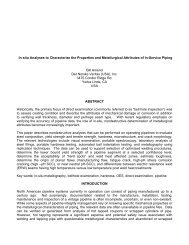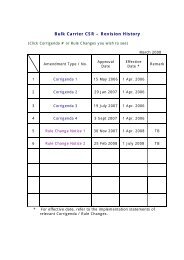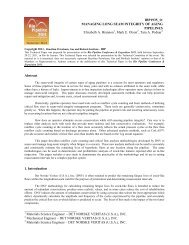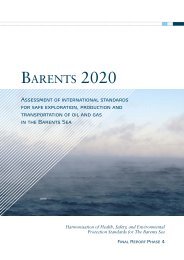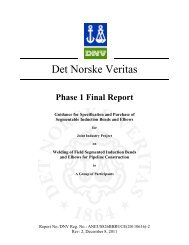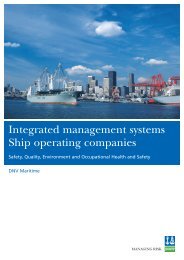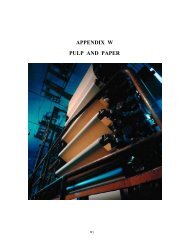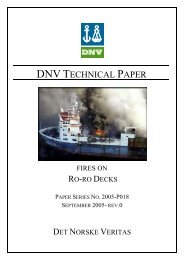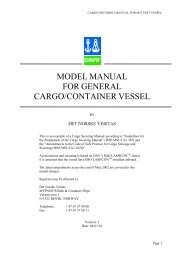Energy deep thinker - DNV
Energy deep thinker - DNV
Energy deep thinker - DNV
You also want an ePaper? Increase the reach of your titles
YUMPU automatically turns print PDFs into web optimized ePapers that Google loves.
“In the future it is not unrealisticto count on the recovery rate in oilproduction being increased from30 percent to 60 percent.”Eivald M.Q. Rørenaccess to reserves. They may have to makean increased commitment to alternativeenergy forms, as several majors have done.This is a question of time anyway.Two-thirds of the world’s oil resourcesare located in OPEC countries, especiallyaround the Persian Gulf. For gas, the pictureis rather different, with Russia havingthe largest reserves, followed by Iran.Russia is an important oil producer, producingaround 8 million barrels of oil aday (the second-largest net exporter in theworld). This production volume can probablybe increased to 11 million barrels aday in a few years’ time. However, Russiais even more important as a gas producer.It has around 32 percent of the world’sproven reserves, while the Middle East has40 percent. Russia mainly exports gas toEurope, the USA, China, Japan and Korea.This will increase considerably in thefuture.Nuclear power poses a special challenge.A few countries are continuing toexpand their nuclear power operations,such as France, Finland, Russia, Japan andChina, while many others are reducingtheirs. In time, fusion energy may make animpression, but that is a long way into thefuture. However, I believe that nuclearpower may experience a renaissance once<strong>DNV</strong> Forum 02 2005it is recognised that other environmentalissues are more of a problem.”THE OIL PRICE – AN INCENTIVE FORINVESTMENTS When we ask Røren to predicthow the oil price will develop, he isnot as certain as he is about productiondevelopments.“Most people’s predictions about theoil price will be wrong,” he says. “I thinkit’s important to note that the sparecapacity in OPEC’s production has shrunkconsiderably over the past few years. It’sprobably only Saudi Arabia that has anysignificant amount, around 1.5 millionbarrels a day, which can probably beincreased to 2.0 million barrels a day bythe end of 2005. However, we mustremember that the increase in annualconsumption is almost 2 million barrels aday. Any failure in production somewherein the world immediately results in a verydifficult situation. Uncertainty regardingreserves results in higher prices, as doespolitical unrest – as we have seen in Iraq.The global balance is tight, and is reflectedin price.“A common code for classifying reservesis necessary (United Nations FrameworkClassification of Petroleum Resources), asis transparent and consistent reporting.The Norwegian reporting model is a goodexample of this,” says Røren.“Most of the oil that is to be producedover the next 20 years will come from non-OPEC countries. This oil must be foundand produced in increasingly difficultareas. That costs money, which is why theoil price must also provide incentives forinvestments in exploration and developmentand in extra capacity. I believe thatOPEC has demonstrated responsibility andcarried out a good job of balancing thesupply and demand situation. Nonetheless,all the indications are that we will have torelate to continued high oil and energyprices.”Eivald Røren is about to resign as the11th President of the WPC. Now this 70-year-old bundle of energy who loves skiingand being outdoors is looking forward tospending his days with his family andfriends. He is retiring after many yearsof having the energy world at his feet.5




